Scot's secret mission Spitfire found in Norwegian peat bog
- Published

The recovered remains of Spitfire AA180 laid out in Surnadal
The remains of a Spitfire shot down while on a mission to photograph the WW2 German battleship Tirpitz have been recovered from a Norwegian peat bog.
Auchterarder-born pilot, Flt Lt Alastair "Sandy" Gunn, had flown the aircraft out of RAF Wick in Caithness on 5 March 1942.
Gunn was captured, interrogated, imprisoned and later executed after the Stalag Luft III "Great Escape".
His plane, Spitfire AA810, is to be restored and flown again.
Finding the aircraft, which crashed on a mountainside near the village of Surnadal, south west of Trondheim, has involved months of research and days of painstaking recovery work.
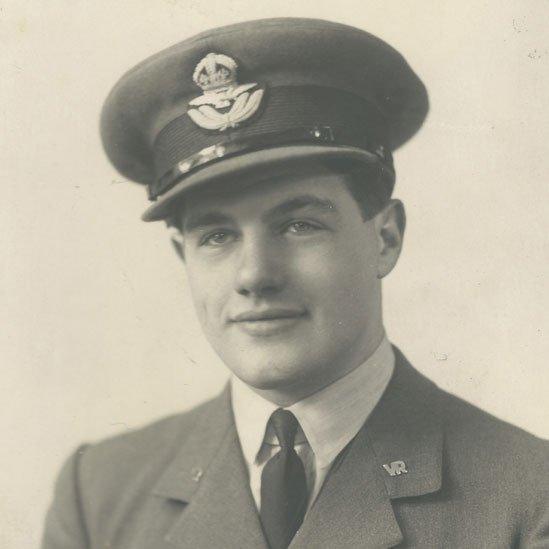
Flt Lt Alastair Gunn was 22 when he was shot down over Norway
Sussex-based Spitfire historian and restorer Tony Hoskins studied historical documents and drew on local knowledge in Surnadal to find the Spitfire.
Parts of the aircraft had been found previously, but not the main crash site.
Mr Hoskins made a search of the suspected location of the main site with some local people.
They first came across "quite a large amount" of aircraft parts on the surface of the peat bog, before Mr Hoskins detected more below the surface with the aid of a metal detector.
Mr Hoskins said: "It was an incredible high to find the Spitfire."

Flt Lt Gunn and a Spitfire
Villagers helped Mr Hoskins and the rest of the Spitfire AA810 project team to move the material, including engine parts, by hand from the peat bog.
Mr Hoskins said: "The help the people of Surnadal, including Lilli Husby and Frode Foss, gave us was incredible."
One of the villagers gave the team a piece of the Spitfire a relative had recovered from the mountainside in the years after the war.
Mr Hoskins said this then led to an "Antiques Roadshow type" event. Other people in the village came along with pieces of Spitfire.
Among them was the descendant of a postman who had repaired his 1942 German Zundapp motorcycle in the 1950s with a part from the plane's Merlin engine.
The Spitfire project is now working on building a Spitfire using parts recovered from the crash site.
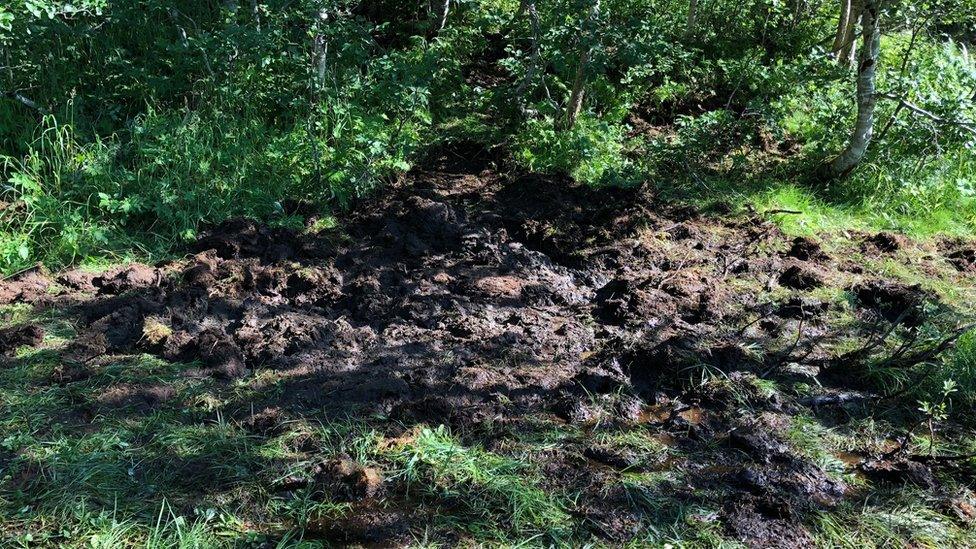
The main crash site was found buried under peat
Mr Hoskins paid tribute to Flt Lt Gunn, who was 22 and had flown 32 operational missions when was shot down.
He said the Scot, along with other pilots of the Photographic Reconnaissance Unit, faced huge odds on their missions from Scotland to Norway to find and photograph the Tirpitz.
The pilots chances of survival were extremely low, flying in aircraft stripped of guns and armour to make them lighter and also to carry additional fuel.
Mr Hoskins said: "The pilots' only defence was evade and escape using the speed and agility of the aircraft.
"The Germans were likely to have detected Alastair Gunn tens of miles away across the North Sea," he said.
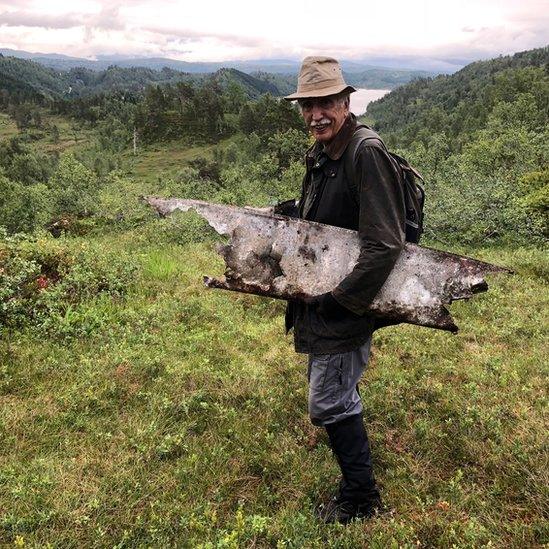
A member of the Spitfire A810 project team with a section of the aircraft
"The conditions he was flying in were blue skies, so he would have been spotted, and there was a listening post that he was unlikely to have been aware of."
Flt Lt Gunn was shot down while trying to evade two German fighter planes sent to intercept him.
After parachuting from his Spitfire, the pilot was captured.
Mr Hoskins said Flt Lt Gunn was treated well by his captors and the people in Surnadal. But he was later moved from the village to be interrogated.
The Germans believed the Spitfire had been flown from a secret air base in Norway or Sweden and used various techniques, including denying him food, during his interrogation.
Flt Lt Gunn gave details of his ordeal in letters and diaries he wrote. Mr Hoskins said: "His interrogators even took to a pub and poured drink down his throat in their efforts to make him talk."
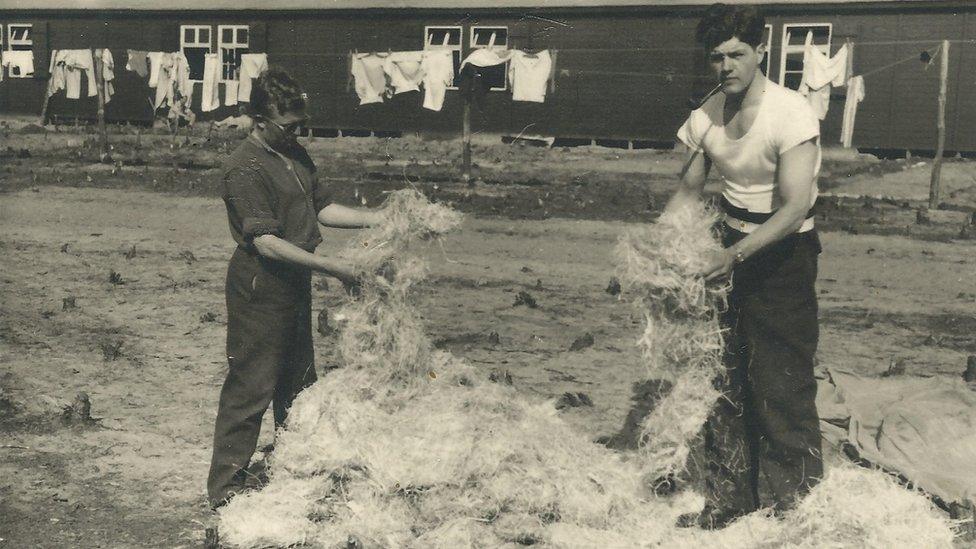
Flt Lt Gunn, right, stuffing fresh straw into bedding at Stalag Luft III
The pilot, who refused to give details of his missions, was later moved to Stalag Luft III in Poland and was a key figure in the prisoner of wars' escape tunnel digging.
Flt Lt Gunn was among those to escape the camp, but he was captured after two days on the run and shot. He was 24.
The Spitfire project has been supported by Spitfire Heritage Distillers and Experience Tells Ltd and will be told in a new book, Sandy's Story, which will be published on the 75th anniversary of the Great Escape in March next year.
The recovery of the aircraft will also feature in BBC Four's Digging for Britain.
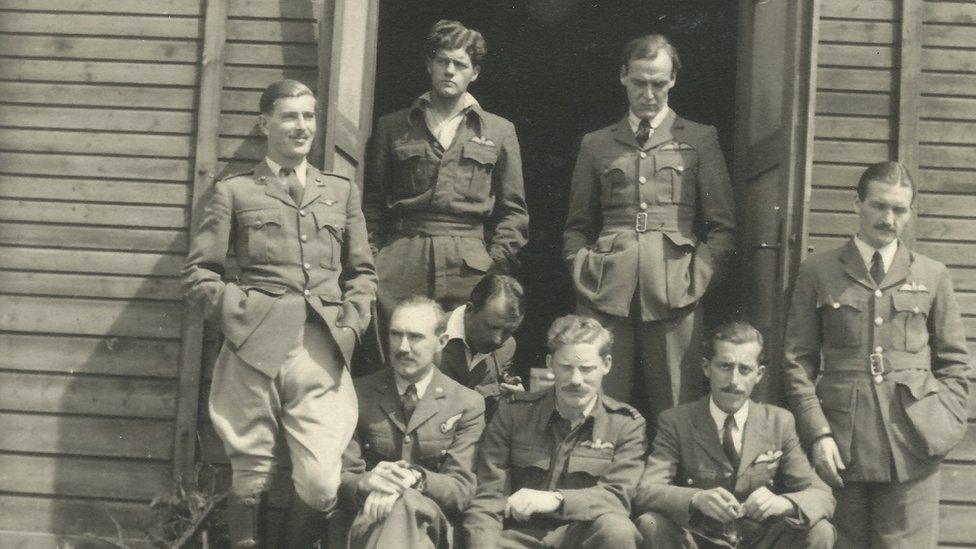
Flt Lt Gunn, back row second from left, at Stalag Luft III